Symposium Speakers and Moderators
Keynotes
 Arati Prabhakar: Dr. Prabhakar is the current Assistant to the President for Science and Technology and Director of the White House Office of Science and Technology Policy. In this capacity, Prabhakar is the President’s Chief Advisor for Science and Technology, a member of the President’s Cabinet, and co-chair of the President’s Council of Advisors on Science and Technology (PCAST). An engineer and applied physicist with broad management and leadership experience, Prabhakar has led two different federal R&D agencies and worked with startups, large companies, universities, government labs, and nonprofits across a wide variety of sectors to create new solutions for critical challenges. She served as director of DARPA, the Defense Advanced Research Projects Agency, from 2012 to 2017. In 1993, she was confirmed by the U.S. Senate as director of the National Institute of Standards and Technology (NIST), becoming the first woman to lead the agency. Between these federal leadership roles, Prabhakar spent 15 years in Silicon Valley as a company executive and as a venture capitalist. In 2019, she founded Actuate, a nonprofit organization to develop new approaches to innovation for society’s essential challenges.
Arati Prabhakar: Dr. Prabhakar is the current Assistant to the President for Science and Technology and Director of the White House Office of Science and Technology Policy. In this capacity, Prabhakar is the President’s Chief Advisor for Science and Technology, a member of the President’s Cabinet, and co-chair of the President’s Council of Advisors on Science and Technology (PCAST). An engineer and applied physicist with broad management and leadership experience, Prabhakar has led two different federal R&D agencies and worked with startups, large companies, universities, government labs, and nonprofits across a wide variety of sectors to create new solutions for critical challenges. She served as director of DARPA, the Defense Advanced Research Projects Agency, from 2012 to 2017. In 1993, she was confirmed by the U.S. Senate as director of the National Institute of Standards and Technology (NIST), becoming the first woman to lead the agency. Between these federal leadership roles, Prabhakar spent 15 years in Silicon Valley as a company executive and as a venture capitalist. In 2019, she founded Actuate, a nonprofit organization to develop new approaches to innovation for society’s essential challenges.
https://www.whitehouse.gov/ostp/directors-office/
 Chad Mirkin: Dr. Mirkin is the Director of the International Institute for Nanotechnology and the George B. Rathmann Professor of Chemistry, Professor of Chemical and Biological Engineering, Professor of Biomedical Engineering, Professor of Materials Science & Engineering, and Professor of Medicine at Northwestern University. He is a chemist and a nanoscience expert, who has discovered and developed spherical nucleic acids (SNAs) and SNA-based biodetection and therapeutic schemes. Moreover, he has been the inventor and chief developer of Dip Pen Nanolithography and cantilever-free scanning probe lithography methods. National geographic selected his innovation of such methods as one of the top 100 scientific discoveries in the world. He is the founder of multiple companies, including TERA-print, Azul 3D, MattIQ, and Flashpoint Therapeutics. Dr. Mirkin served as a Member of the President’s Council of Advisors on Science & Technology (PCAST) during both terms of the Obama Administration, and has been elected to all three US National Academies (Medicine, Science, and Engineering). He is the founding editor of the nanotechnology journal Small and co-chaired the 2010 WTEC study on “Nanotechnology Research Directions for Societal Needs in 2020.”
Chad Mirkin: Dr. Mirkin is the Director of the International Institute for Nanotechnology and the George B. Rathmann Professor of Chemistry, Professor of Chemical and Biological Engineering, Professor of Biomedical Engineering, Professor of Materials Science & Engineering, and Professor of Medicine at Northwestern University. He is a chemist and a nanoscience expert, who has discovered and developed spherical nucleic acids (SNAs) and SNA-based biodetection and therapeutic schemes. Moreover, he has been the inventor and chief developer of Dip Pen Nanolithography and cantilever-free scanning probe lithography methods. National geographic selected his innovation of such methods as one of the top 100 scientific discoveries in the world. He is the founder of multiple companies, including TERA-print, Azul 3D, MattIQ, and Flashpoint Therapeutics. Dr. Mirkin served as a Member of the President’s Council of Advisors on Science & Technology (PCAST) during both terms of the Obama Administration, and has been elected to all three US National Academies (Medicine, Science, and Engineering). He is the founding editor of the nanotechnology journal Small and co-chaired the 2010 WTEC study on “Nanotechnology Research Directions for Societal Needs in 2020.”
https://mirkin-group.northwestern.edu/
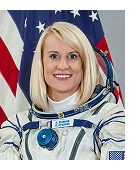 Kathleen Rubins: Dr. Rubins was selected in July 2009 as one of 9 members of the 20th NASA astronaut class. She completed her first spaceflight on Expedition 48/49, during which the international crew conducted or participated in more than 275 different scientific experiments including research in molecular and cellular biology, human physiology, fluid and combustion physics, Earth and space science and technology development. Dr. Rubins was the first person to sequence DNA in space, eventually sequencing over 2 billion base pairs of DNA, using a hand-held, USB-powered DNA sequencer called the MinION made by Oxford Nanopore Technologies . DNA sequencing could allow astronauts to diagnose an illness in space or identify microbes growing at the space station. Most recently, Dr. Rubins served aboard the International Space Station as flight engineer for Expedition 63/64. Across her two flights, she spent a total of 300 days in space, the fourth most days in space by a U.S. female astronaut. She holds a Bachelor of Science in Molecular Biology from the University of California and a Ph.D. in Cancer Biology from Stanford University Medical School Biochemistry Department and Microbiology and Immunology Department. She was named to Popular Science’s Brilliant Ten in 2009 and has served as an Innovation Officer in the U.S. Army Reserve since 2021.
Kathleen Rubins: Dr. Rubins was selected in July 2009 as one of 9 members of the 20th NASA astronaut class. She completed her first spaceflight on Expedition 48/49, during which the international crew conducted or participated in more than 275 different scientific experiments including research in molecular and cellular biology, human physiology, fluid and combustion physics, Earth and space science and technology development. Dr. Rubins was the first person to sequence DNA in space, eventually sequencing over 2 billion base pairs of DNA, using a hand-held, USB-powered DNA sequencer called the MinION made by Oxford Nanopore Technologies . DNA sequencing could allow astronauts to diagnose an illness in space or identify microbes growing at the space station. Most recently, Dr. Rubins served aboard the International Space Station as flight engineer for Expedition 63/64. Across her two flights, she spent a total of 300 days in space, the fourth most days in space by a U.S. female astronaut. She holds a Bachelor of Science in Molecular Biology from the University of California and a Ph.D. in Cancer Biology from Stanford University Medical School Biochemistry Department and Microbiology and Immunology Department. She was named to Popular Science’s Brilliant Ten in 2009 and has served as an Innovation Officer in the U.S. Army Reserve since 2021.
https://www.nasa.gov/astronauts/biographies/kathleen-rubins/biography
Keynote Panel: The Future of Nanotechnology
 Maxx Arguilla: Dr. Arguilla is an Assistant Professor of chemistry at University of California, Irvine and an affiliate faculty of the Chemical and Biomolecular Engineering Department and the Eddleman Quantum Institute. He leads an interdisciplinary experimental chemistry laboratory that works at the interfaces of solid state chemistry, materials chemistry and physics, and nanoscience. His research program aims to develop synthetic and characterization tools to harness the emergent physical properties of atomically precise low-dimensional solids that are poised as building blocks for next-generation quantum, spintronic, optoelectronic, and sensing technologies approaching the sub-nanometer regime. In 2023, he received the National Science Foundation CAREER Award and was named as Chemical and Engineering News “Talented 12” for his work on atom-thin wires and sheets with exciting electronic and optical properties.
Maxx Arguilla: Dr. Arguilla is an Assistant Professor of chemistry at University of California, Irvine and an affiliate faculty of the Chemical and Biomolecular Engineering Department and the Eddleman Quantum Institute. He leads an interdisciplinary experimental chemistry laboratory that works at the interfaces of solid state chemistry, materials chemistry and physics, and nanoscience. His research program aims to develop synthetic and characterization tools to harness the emergent physical properties of atomically precise low-dimensional solids that are poised as building blocks for next-generation quantum, spintronic, optoelectronic, and sensing technologies approaching the sub-nanometer regime. In 2023, he received the National Science Foundation CAREER Award and was named as Chemical and Engineering News “Talented 12” for his work on atom-thin wires and sheets with exciting electronic and optical properties.
https://www.maxx-lab.com/
 Jennifer Dionne: Dr. Dionne is Professor of Materials Science and Engineering and of Radiology at Stanford University. She also serves as Deputy Director of Q-NEXT, a DOE National Quantum Research Center. Her interdisciplinary research group investigates new ways to control light-matter interactions and the development of new nanophotonic materials, methods, and devices, especially in the areas of health, clean energy, and sustainability. She is a 2020 Chan Zuckerberg Biohub Investigator and received the 2019 Alan T. Waterman Award and the 2014 Presidential Early Career Award for Scientists and Engineers. She is also co-founder of Pumpkinseed, which creates new biomedical insights via de-novo protein sequencing.
Jennifer Dionne: Dr. Dionne is Professor of Materials Science and Engineering and of Radiology at Stanford University. She also serves as Deputy Director of Q-NEXT, a DOE National Quantum Research Center. Her interdisciplinary research group investigates new ways to control light-matter interactions and the development of new nanophotonic materials, methods, and devices, especially in the areas of health, clean energy, and sustainability. She is a 2020 Chan Zuckerberg Biohub Investigator and received the 2019 Alan T. Waterman Award and the 2014 Presidential Early Career Award for Scientists and Engineers. She is also co-founder of Pumpkinseed, which creates new biomedical insights via de-novo protein sequencing.
http://dionne.stanford.edu/
 Thomas Epps III: Dr. Epps is the Allen and Myr Ferguson Distinguished Professor of Chemical and Biomolecular Engineering at the University of Delaware, also serving as the Director of the Center for Research in Soft Matter and Polymers and the Center for Hybrid, Active, and Responsive Materials. The primary focus of the Epps laboratory lies in designing, building, and characterizing new polymeric materials exhibiting molecular level self-assembly. Several nano-applications for block copolymers and polymer blends include: battery and fuel cell membranes, organic photovoltaics, analytical separations membranes, nanoscale containers and scaffolds for targeted drug delivery, precursors to electronic arrays, and surface responsive materials. Dr. Epps is also Co-founder and Chief Scientific Officer of Lignolix, Inc., which focuses on developing renewable and high-performance specialty chemicals upcycled from plant lignin waste.
Thomas Epps III: Dr. Epps is the Allen and Myr Ferguson Distinguished Professor of Chemical and Biomolecular Engineering at the University of Delaware, also serving as the Director of the Center for Research in Soft Matter and Polymers and the Center for Hybrid, Active, and Responsive Materials. The primary focus of the Epps laboratory lies in designing, building, and characterizing new polymeric materials exhibiting molecular level self-assembly. Several nano-applications for block copolymers and polymer blends include: battery and fuel cell membranes, organic photovoltaics, analytical separations membranes, nanoscale containers and scaffolds for targeted drug delivery, precursors to electronic arrays, and surface responsive materials. Dr. Epps is also Co-founder and Chief Scientific Officer of Lignolix, Inc., which focuses on developing renewable and high-performance specialty chemicals upcycled from plant lignin waste.
https://sites.udel.edu/eppsgroup/
 Ali Beskok [moderator]: Dr. Beskok is the Associate Dean for Research Innovation and Industry Partnerships and the George R. Brown Chair of Mechanical Engineering at Southern Methodist University. His research focuses on theory, numerical simulations, and experiments on biophysics, micro- and nano-scale transport phenomena, multiphase flow heat and mass transfer, electrokinetic transport, and dielectric spectroscopy-based detection and characterization techniques. He is the co-author of the first book on simulations of micro- and nano-flows.
Ali Beskok [moderator]: Dr. Beskok is the Associate Dean for Research Innovation and Industry Partnerships and the George R. Brown Chair of Mechanical Engineering at Southern Methodist University. His research focuses on theory, numerical simulations, and experiments on biophysics, micro- and nano-scale transport phenomena, multiphase flow heat and mass transfer, electrokinetic transport, and dielectric spectroscopy-based detection and characterization techniques. He is the co-author of the first book on simulations of micro- and nano-flows.
https://www.smu.edu/Lyle/Departments/ME/People/Faculty/Ali-Beskok
Policy Perspectives
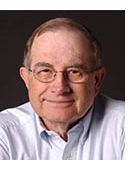 Neal Lane: Dr. Lane is the senior fellow in science and technology policy at the Baker Institute, and Professor of Physics and Astronomy Emeritus at Rice University. From 1998-2001, Dr. Lane served in the federal government as Assistant to the President for Science and Technology and Director of the White House Office of Science and Technology Policy (OSTP). During this time, Dr. Lane submitted to President Bill Clinton PCAST’s strong endorsement of the National Nanotechnology Initiative (NNI), paving the way for its eventual adoption into law during the Bush administration. Previously, Dr. Lane served as director of the National Science Foundation (NSF). He has received the National Academy of Sciences Public Welfare Medal, the American Institute of Physics K.T. Compton Medal, and in 2013, the National Science Board presented Lane with the Vannevar Bush Award, which recognizes exceptional, lifelong leaders who have made substantial contributions to the nation through public service activities in science, technology and policy.
Neal Lane: Dr. Lane is the senior fellow in science and technology policy at the Baker Institute, and Professor of Physics and Astronomy Emeritus at Rice University. From 1998-2001, Dr. Lane served in the federal government as Assistant to the President for Science and Technology and Director of the White House Office of Science and Technology Policy (OSTP). During this time, Dr. Lane submitted to President Bill Clinton PCAST’s strong endorsement of the National Nanotechnology Initiative (NNI), paving the way for its eventual adoption into law during the Bush administration. Previously, Dr. Lane served as director of the National Science Foundation (NSF). He has received the National Academy of Sciences Public Welfare Medal, the American Institute of Physics K.T. Compton Medal, and in 2013, the National Science Board presented Lane with the Vannevar Bush Award, which recognizes exceptional, lifelong leaders who have made substantial contributions to the nation through public service activities in science, technology and policy.
https://profiles.rice.edu/faculty/neal-f-lane
 Ron Wyden: U.S. Senator Wyden has represented the state of Oregon since 1996. He chairs the Senate Finance Committee and also serves on the Energy and Natural Resources, Budget, Select Committee on Intelligence, and Joint Committee on Taxation. Senator Wyden has been a consistent advocate for nanotechnology research and development, authoring the “21st Century Nanotechnology Research and Development Act (S. 2945) in 2002-03 that enabled the National Nanotechnology Initiative (NNI), offering leadership to the Congressional Nanotechnology Caucus, and proposing a bi-partisan prize competition to spur nanotech innovation.
Ron Wyden: U.S. Senator Wyden has represented the state of Oregon since 1996. He chairs the Senate Finance Committee and also serves on the Energy and Natural Resources, Budget, Select Committee on Intelligence, and Joint Committee on Taxation. Senator Wyden has been a consistent advocate for nanotechnology research and development, authoring the “21st Century Nanotechnology Research and Development Act (S. 2945) in 2002-03 that enabled the National Nanotechnology Initiative (NNI), offering leadership to the Congressional Nanotechnology Caucus, and proposing a bi-partisan prize competition to spur nanotech innovation.
https://www.wyden.senate.gov/
 Sharon Hays: Dr. Hays is Chief Innovation Officer at Astrion, a company committed to innovation and customer progress in the U.S. Government’s civilian, defense, and space communities. From 2002-2009, she served as Associate Director and Deputy Director for Science in the White House Office of Science and Technology Policy. Appointed by President George W. Bush, she helped develop and coordinate U.S. government policies on a wide range of science and engineering topics,including strategic plans and budget supplements associated with the National Nanotechnology Initiative (NNI).
Sharon Hays: Dr. Hays is Chief Innovation Officer at Astrion, a company committed to innovation and customer progress in the U.S. Government’s civilian, defense, and space communities. From 2002-2009, she served as Associate Director and Deputy Director for Science in the White House Office of Science and Technology Policy. Appointed by President George W. Bush, she helped develop and coordinate U.S. government policies on a wide range of science and engineering topics,including strategic plans and budget supplements associated with the National Nanotechnology Initiative (NNI).
https://astrion.us/our-team/#team-4
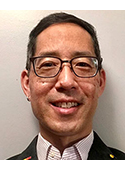 Kei Koizumi: Kei Koizumi is Principal Deputy Director for Policy in the White House Office of Science and Technology Policy (OSTP) and Acting Executive Director of the National Science and Technology Council (NSTC). He also served as both the Chief of Staff and Acting Director in the first year of the Biden Administration. Previously, he served as Senior Advisor in Science Policy at AAAS and was Assistant Director for Federal Research and Development at OSTP. He is a leading authority on the federal budget, federal support for research and development, science and technology policy, and R&D funding data. He has worked to formulate, implement, and coordinate Federal R&D policy, including the National Nanotechnology Initiative (NNI), and especially through the NSTC . He is a Fellow of the American Association for the Advancement of Science.
Kei Koizumi: Kei Koizumi is Principal Deputy Director for Policy in the White House Office of Science and Technology Policy (OSTP) and Acting Executive Director of the National Science and Technology Council (NSTC). He also served as both the Chief of Staff and Acting Director in the first year of the Biden Administration. Previously, he served as Senior Advisor in Science Policy at AAAS and was Assistant Director for Federal Research and Development at OSTP. He is a leading authority on the federal budget, federal support for research and development, science and technology policy, and R&D funding data. He has worked to formulate, implement, and coordinate Federal R&D policy, including the National Nanotechnology Initiative (NNI), and especially through the NSTC . He is a Fellow of the American Association for the Advancement of Science.
https://www.whitehouse.gov/ostp/
Fundamental Research
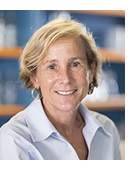 Cheryl Kerfeld: Dr. Kerfeld is the Hannah Distinguished Professor of Structural Bioengineering in the Department of Biochemistry and Molecular Biology at Michigan State University (MSU). She also holds appointments in the Molecular Biophysics and Integrated Bioimaging Division of Lawrence Berkeley National Laboratory, the Department of Plant and Microbial Biology at UC Berkeley and the Berkeley Synthetic Biology Institute. The Kerfeld group combines methods in bioinformatics, cellular imaging, synthetic and structural biology to harness nanobiotechnology focusing on bacterial microcompartments, carbon fixation, and cyanobacterial photoprotection mechanisms. In 2022, Dr. Kerfeld received support from the Department of Energy to establish the MSU-DOE Plant Research Laboratory, the Center for Catalysis in Biomimetic Confinement to explore how nature compartmentalizes some of its most important biochemical reactions.
Cheryl Kerfeld: Dr. Kerfeld is the Hannah Distinguished Professor of Structural Bioengineering in the Department of Biochemistry and Molecular Biology at Michigan State University (MSU). She also holds appointments in the Molecular Biophysics and Integrated Bioimaging Division of Lawrence Berkeley National Laboratory, the Department of Plant and Microbial Biology at UC Berkeley and the Berkeley Synthetic Biology Institute. The Kerfeld group combines methods in bioinformatics, cellular imaging, synthetic and structural biology to harness nanobiotechnology focusing on bacterial microcompartments, carbon fixation, and cyanobacterial photoprotection mechanisms. In 2022, Dr. Kerfeld received support from the Department of Energy to establish the MSU-DOE Plant Research Laboratory, the Center for Catalysis in Biomimetic Confinement to explore how nature compartmentalizes some of its most important biochemical reactions.
https://www.kerfeldlab.org/
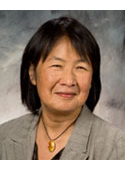 Evelyn Hu: Dr. Hu is the Tarr-Coyne Professor of Applied Physics and of Electrical Engineering at Harvard University. Her research matches nanofabrication techniques with the integration of materials that allow the formation of structures and devices that demonstrate exceptional electronic and photonic behavior. One example of this is the focus on coupling artificial atoms, such as quantum dots or color centers in diamond, to carefully-crafted nanoscale optical cavities. Dr. Hu co-chaired the 1997-99 WTEC Panel on “Nanostructure Science and Technology,” which produced a report that documented the potential importance of a national initiative on nanotechnology. She is currently a Co-Director of the Harvard Quantum Initiative. Prior to her appointment at Harvard, she was Scientific Co-Director of the California Nanosystems Institute and worked at AT&T Bell Laboratories. Hu is a member of the National Academy of Sciences, National Academy of Engineering, American Academy of Arts and Sciences, the Academia Sinica of Taiwan, and a recipient of an NSF Distinguished Teaching Fellow award.
Evelyn Hu: Dr. Hu is the Tarr-Coyne Professor of Applied Physics and of Electrical Engineering at Harvard University. Her research matches nanofabrication techniques with the integration of materials that allow the formation of structures and devices that demonstrate exceptional electronic and photonic behavior. One example of this is the focus on coupling artificial atoms, such as quantum dots or color centers in diamond, to carefully-crafted nanoscale optical cavities. Dr. Hu co-chaired the 1997-99 WTEC Panel on “Nanostructure Science and Technology,” which produced a report that documented the potential importance of a national initiative on nanotechnology. She is currently a Co-Director of the Harvard Quantum Initiative. Prior to her appointment at Harvard, she was Scientific Co-Director of the California Nanosystems Institute and worked at AT&T Bell Laboratories. Hu is a member of the National Academy of Sciences, National Academy of Engineering, American Academy of Arts and Sciences, the Academia Sinica of Taiwan, and a recipient of an NSF Distinguished Teaching Fellow award.
https://hugroup.seas.harvard.edu/evelyn-hu
 Denis Wirtz: Dr. Wirtz is the Theophilus Halley Smoot Professor in the Department of Chemical and Biomolecular Engineering and vice provost for research at Johns Hopkins University. Through his research at the interface of physics, biology, and oncology, he has contributed to the understanding of cancer cell migration, cytoskeleton biophysics, and the nascent field of mechanobiology. He has conducted research in cell migration in 3D settings, bacterial cell division, and high-throughput cell phenotyping. Recently, Dr. Wirtz developed CODA, an AI-based method to image large volumes of tissues and tumors in 3D. He co-founded the Johns Hopkins Institute for NanoBioTechnology (INBT) and is the director of the NCI-funded postdoctoral training program in nanotechnology for oncology, the NCI-funded Physical Sciences-Oncology Center, and the Johns Hopkins Cellular Cancer Biology Imaging Cancer Center.
Denis Wirtz: Dr. Wirtz is the Theophilus Halley Smoot Professor in the Department of Chemical and Biomolecular Engineering and vice provost for research at Johns Hopkins University. Through his research at the interface of physics, biology, and oncology, he has contributed to the understanding of cancer cell migration, cytoskeleton biophysics, and the nascent field of mechanobiology. He has conducted research in cell migration in 3D settings, bacterial cell division, and high-throughput cell phenotyping. Recently, Dr. Wirtz developed CODA, an AI-based method to image large volumes of tissues and tumors in 3D. He co-founded the Johns Hopkins Institute for NanoBioTechnology (INBT) and is the director of the NCI-funded postdoctoral training program in nanotechnology for oncology, the NCI-funded Physical Sciences-Oncology Center, and the Johns Hopkins Cellular Cancer Biology Imaging Cancer Center.
https://wirtzlab.johnshopkins.edu/
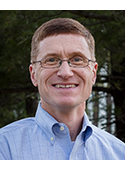 Andrew Schwartz (moderator): Dr. Schwartz serves as the Division Director for Materials Sciences and Engineering at the Department of Energy (DOE), previously managing the Energy Frontier Research Centers (EFRCs). Prior to joining DOE, Dr. Schwartz spent seven years in industry leading a multi-disciplinary scientific and engineering team in the research and development of a new technology for semiconductor metrology. Since 2009 he has represented DOE on the Nanoscale Science, Engineering, and Technology (NSET) subcommittee, serving as one of two co-chairs since 2019.
Andrew Schwartz (moderator): Dr. Schwartz serves as the Division Director for Materials Sciences and Engineering at the Department of Energy (DOE), previously managing the Energy Frontier Research Centers (EFRCs). Prior to joining DOE, Dr. Schwartz spent seven years in industry leading a multi-disciplinary scientific and engineering team in the research and development of a new technology for semiconductor metrology. Since 2009 he has represented DOE on the Nanoscale Science, Engineering, and Technology (NSET) subcommittee, serving as one of two co-chairs since 2019.
https://science.osti.gov/bes/About/Dr-Andrew-R-Schwartz
Commercialization
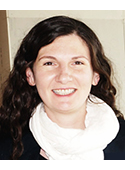 Theresa Dankovich: Dr. Dankovich invented germ-killing water filters as a PhD student at McGill University and co-founded her company Folia Water in 2016 to scale up production. Folia Filters are made of thick paper embedded with silver nanoparticles, which are lethal to microbes. In response to COVID-19, she used low-cost antimicrobial paper to create an antiviral 3-ply face mask. Dr. Dankovich also has a patent application pending for microwavable paper food packaging embedded with metal nanoparticles that absorb microwave radiation and convert it into heat.https://www.foliamaterials.com/
Theresa Dankovich: Dr. Dankovich invented germ-killing water filters as a PhD student at McGill University and co-founded her company Folia Water in 2016 to scale up production. Folia Filters are made of thick paper embedded with silver nanoparticles, which are lethal to microbes. In response to COVID-19, she used low-cost antimicrobial paper to create an antiviral 3-ply face mask. Dr. Dankovich also has a patent application pending for microwavable paper food packaging embedded with metal nanoparticles that absorb microwave radiation and convert it into heat.https://www.foliamaterials.com/
 David Hatrick: Dr. Hatrick is Vice President of Innovation at Huntsman Advanced Materials, which produces adhesives, composites, and formulation products across a wide variety of industrial and consumer applications across the globe. In 2018, Huntsman acquired Nanocomp Technologies, which manufactures carbon nanotube fiber products for aerospace and defense, aviation, automotive, energy, and consumer industries. Subsequently, Huntsman announced construction of a 30-ton MIRALON® carbon nanotube materials plant, which converts methane gas to carbon nanotubes and clean-burning hydrogen. Dr. Hatrick leads Huntsman’s technology and innovation activities across from early stage technology platform development through product development and technical service. https://business.rice.edu/person/david-hatrick-phd
David Hatrick: Dr. Hatrick is Vice President of Innovation at Huntsman Advanced Materials, which produces adhesives, composites, and formulation products across a wide variety of industrial and consumer applications across the globe. In 2018, Huntsman acquired Nanocomp Technologies, which manufactures carbon nanotube fiber products for aerospace and defense, aviation, automotive, energy, and consumer industries. Subsequently, Huntsman announced construction of a 30-ton MIRALON® carbon nanotube materials plant, which converts methane gas to carbon nanotubes and clean-burning hydrogen. Dr. Hatrick leads Huntsman’s technology and innovation activities across from early stage technology platform development through product development and technical service. https://business.rice.edu/person/david-hatrick-phd
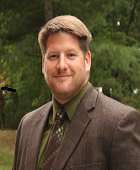 Matthew Hull: Dr. Hull has been an active part of the nanotechnology environmental health and safety (EHS) landscape for over two decades. In 2003, he developed the NanoSafe™ framework, which provided an integrated approach for managing nanotechnology EHS risks. That framework led Hull to found NanoSafe, Inc., in 2007, and contributed pioneering programs in web-enabled nanotechnology EHS management systems, nanotechnology waste recovery and recycling processes, third-party test and verification services, and life-cycle ecotoxicological studies of nanomanufacturing. Hull successfully exited the company in 2023, through an acquisition by ITA International, LLC. Currently, Hull serves as Research Professor in Virginia Tech’s Institute for Critical Technology and Applied Science as well as Director for the Nanoscale Characterization and Fabrication Laboratory and the Materials Characterization Laboratory. He also serves as Associate Director for Innovation and Entrepreneurship for the NSF-funded US National Nanotechnology Coordinated Infrastructure (NNCI) and Virginia Tech’s National Center for Earth and Environmental Nanotechnology.
Matthew Hull: Dr. Hull has been an active part of the nanotechnology environmental health and safety (EHS) landscape for over two decades. In 2003, he developed the NanoSafe™ framework, which provided an integrated approach for managing nanotechnology EHS risks. That framework led Hull to found NanoSafe, Inc., in 2007, and contributed pioneering programs in web-enabled nanotechnology EHS management systems, nanotechnology waste recovery and recycling processes, third-party test and verification services, and life-cycle ecotoxicological studies of nanomanufacturing. Hull successfully exited the company in 2023, through an acquisition by ITA International, LLC. Currently, Hull serves as Research Professor in Virginia Tech’s Institute for Critical Technology and Applied Science as well as Director for the Nanoscale Characterization and Fabrication Laboratory and the Materials Characterization Laboratory. He also serves as Associate Director for Innovation and Entrepreneurship for the NSF-funded US National Nanotechnology Coordinated Infrastructure (NNCI) and Virginia Tech’s National Center for Earth and Environmental Nanotechnology.
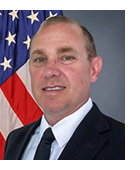 James D. Burgess [moderator]: Dr. Burgess manages university affiliated research centers (UARCs) for the Department of Defense, including the Institute for Soldier Nanotechnologies (ISN). The ISN is a team of MIT, Army, industry, and other partners working together to discover and field technologies that dramatically improve the protection, survivability, and mission capabilities of the Warfighter and of Warfighter-supporting platforms and systems. Scientific Research Areas include: photonics, electronics, and quantum sciences; sciences of materials for extreme environments; energy sciences; devices and materials with advanced functionalities; and soldier medicine – battlefield care and hazardous substances detection and protection. Dr. Burgess represents the Army on the Nanoscale Science, Engineering, and Technology (NSET) subcommittee.
James D. Burgess [moderator]: Dr. Burgess manages university affiliated research centers (UARCs) for the Department of Defense, including the Institute for Soldier Nanotechnologies (ISN). The ISN is a team of MIT, Army, industry, and other partners working together to discover and field technologies that dramatically improve the protection, survivability, and mission capabilities of the Warfighter and of Warfighter-supporting platforms and systems. Scientific Research Areas include: photonics, electronics, and quantum sciences; sciences of materials for extreme environments; energy sciences; devices and materials with advanced functionalities; and soldier medicine – battlefield care and hazardous substances detection and protection. Dr. Burgess represents the Army on the Nanoscale Science, Engineering, and Technology (NSET) subcommittee.
https://www.arl.army.mil/collaborate-with-us/opportunity/uarc/
Infrastructure
 Ilke Arslan: Dr. Arslan is the Director of the Center for Nanoscale Materials and the Nanoscience and Technology Division at Argonne National Laboratory. Her research interests include understanding the atomic, electronic, 3D, and time-dependent structure of a range of nanomaterials for energy, including materials for quantum computing and materials for catalysis. She previously held positions at Pacific Northwest National Laboratory, University of California, Davis, and Sandia National Laboratories. Dr. Arslan was honored with the Presidential Early Career Award for Scientists and Engineers, and the Kavli Fellowship from the National Academy of Sciences.
Ilke Arslan: Dr. Arslan is the Director of the Center for Nanoscale Materials and the Nanoscience and Technology Division at Argonne National Laboratory. Her research interests include understanding the atomic, electronic, 3D, and time-dependent structure of a range of nanomaterials for energy, including materials for quantum computing and materials for catalysis. She previously held positions at Pacific Northwest National Laboratory, University of California, Davis, and Sandia National Laboratories. Dr. Arslan was honored with the Presidential Early Career Award for Scientists and Engineers, and the Kavli Fellowship from the National Academy of Sciences.
https://www.anl.gov/profile/ilke-arslan
 Ambika Bumb: Dr. Bumb is the Deputy Executive Director of the Bipartisan Commission on Biodefense and the founder of Bikanta, a company that developed fluorescent nanodiamonds tailored to detect cancer and other specific diseases. Bikanta was spun out of work performed at the NIH and leveraged NNI infrastructure – primarily the Molecular Foundry, a DOE user facility at Berkeley Lab – to access the high-end characterization instrumentation needed to analyze and improve the quality of their material. Dr. Bumb’s professional path has bridged academia, industry, and government, including a role as President Biden’s Deputy Executive Director of the President’s Council of Advisors on Science and Technology (PCAST). https://biodefensecommission.org/teams/ambika-bumb-phd/
Ambika Bumb: Dr. Bumb is the Deputy Executive Director of the Bipartisan Commission on Biodefense and the founder of Bikanta, a company that developed fluorescent nanodiamonds tailored to detect cancer and other specific diseases. Bikanta was spun out of work performed at the NIH and leveraged NNI infrastructure – primarily the Molecular Foundry, a DOE user facility at Berkeley Lab – to access the high-end characterization instrumentation needed to analyze and improve the quality of their material. Dr. Bumb’s professional path has bridged academia, industry, and government, including a role as President Biden’s Deputy Executive Director of the President’s Council of Advisors on Science and Technology (PCAST). https://biodefensecommission.org/teams/ambika-bumb-phd/
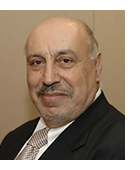 Miguel José Yacamán: Dr. Jose Yacamán is Regents Professor of Applied Physics and Materials science at Northern Arizona University. His research contributes to several fields of Physics, Materials Science, and Nanotechnology. Focusing on the correlation of structure and properties in nanomaterials, he has developed electron microscope methods to study nanoparticles and 2-D materials. He has been selected as a Fellow of the Materials Research Society and the AAAS. His present interest is to develop the nanoscale equivalent of High Entropy Alloys and to develop new catalysts to produce cleaner fuels.
Miguel José Yacamán: Dr. Jose Yacamán is Regents Professor of Applied Physics and Materials science at Northern Arizona University. His research contributes to several fields of Physics, Materials Science, and Nanotechnology. Focusing on the correlation of structure and properties in nanomaterials, he has developed electron microscope methods to study nanoparticles and 2-D materials. He has been selected as a Fellow of the Materials Research Society and the AAAS. His present interest is to develop the nanoscale equivalent of High Entropy Alloys and to develop new catalysts to produce cleaner fuels.
https://nau.edu/applied-physics-and-materials-science/miguel-jose-yacaman/
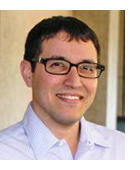 David Rampulla [moderator]: Dr. Rampulla is Director of the Division of Discovery Science and Technology at the National Institute of Biomedical Imaging and Bioengineering within the National Institutes of Health. He has basic and applied research experience in academia, government, and industry – spanning from nano to bio – with particular attention to investigating phenomena at surfaces and interfaces. Dr. Rampulla serves as the lead NIH representative to the Nanoscale Science, Engineering, and Technology (NSET) subcommittee.
David Rampulla [moderator]: Dr. Rampulla is Director of the Division of Discovery Science and Technology at the National Institute of Biomedical Imaging and Bioengineering within the National Institutes of Health. He has basic and applied research experience in academia, government, and industry – spanning from nano to bio – with particular attention to investigating phenomena at surfaces and interfaces. Dr. Rampulla serves as the lead NIH representative to the Nanoscale Science, Engineering, and Technology (NSET) subcommittee.
https://www.nibib.nih.gov/about-nibib/staff/david-rampulla
Workforce Development
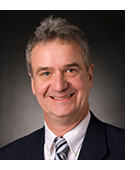 Bob Ehrmann: Mr. Ehrmann has been a leader in nanotechnology education for over twenty years, including serving as the Managing Director of the Center for Nanotechnology Education and Utilization (CNEU) at Penn State University. This is the home of the Pennsylvania Nanofabrication Manufacturing Technology Partnership and the National Science Foundation Regional Center for Nanofabrication Manufacturing Education, an NSF-sponsored regional Advanced Technology Education Center dedicated to research, development, and education across all aspects of micro- and nanotechnology.
Bob Ehrmann: Mr. Ehrmann has been a leader in nanotechnology education for over twenty years, including serving as the Managing Director of the Center for Nanotechnology Education and Utilization (CNEU) at Penn State University. This is the home of the Pennsylvania Nanofabrication Manufacturing Technology Partnership and the National Science Foundation Regional Center for Nanofabrication Manufacturing Education, an NSF-sponsored regional Advanced Technology Education Center dedicated to research, development, and education across all aspects of micro- and nanotechnology.
https://www.cneu.psu.edu/
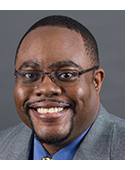 Mikkel Thomas: Dr. Thomas is a Senior Research Engineer and Associate Director for Education and Outreach at the Institute for Electronics and Nanotechnology at Georgia Tech and for the National Nanotechnology Coordinated Infrastructure (NNCI) Coordinating Office. He supported users of the Institute’s cleanrooms, training programs, and academic classes, and provided fabrication support to remote users of the facility. He earned his PhD for research on optical biosensors and holds Masters and Bachelors degrees in Electrical Engineering, all from Georgia Tech.
Mikkel Thomas: Dr. Thomas is a Senior Research Engineer and Associate Director for Education and Outreach at the Institute for Electronics and Nanotechnology at Georgia Tech and for the National Nanotechnology Coordinated Infrastructure (NNCI) Coordinating Office. He supported users of the Institute’s cleanrooms, training programs, and academic classes, and provided fabrication support to remote users of the facility. He earned his PhD for research on optical biosensors and holds Masters and Bachelors degrees in Electrical Engineering, all from Georgia Tech.
https://research.gatech.edu/mikkel-thomas
 Hannah Zierden: Dr. Zierden is an Assistant Professor in the Department of Chemical & Biomolecular Engineering at the University of Maryland. She mentors graduate, undergraduate, and high school students in her laboratory and has been heavily involved in STEM outreach throughout her career. The Zierden laboratory studies cellular communication through biological nanoparticles (also called extracellular vesicles) and aims to rationally engineer next generation therapies to treat a range of diseases, with particular focus on treating gynecologic and obstetric indications.
Hannah Zierden: Dr. Zierden is an Assistant Professor in the Department of Chemical & Biomolecular Engineering at the University of Maryland. She mentors graduate, undergraduate, and high school students in her laboratory and has been heavily involved in STEM outreach throughout her career. The Zierden laboratory studies cellular communication through biological nanoparticles (also called extracellular vesicles) and aims to rationally engineer next generation therapies to treat a range of diseases, with particular focus on treating gynecologic and obstetric indications.
https://www.zierdenlab.org/
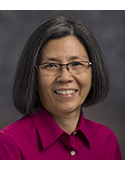 Mia Siochi [moderator]: Dr. Siochi is a senior research materials engineer in the Advanced Materials and Processing Branch (AMPB) at NASA Langley Research Center, playing a key role in shaping emerging capabilities in nanotechnology research. She leads multidisciplinary efforts to develop superstrong lightweight structural materials based on carbon nanomaterials.These materials have the potential to change how we might design launch vehicles in the future. Dr. Siochi is also working on designing engineered surfaces that prevent insects from sticking to aircraft wings in order to enhance fuel efficiency, a research problem she first encountered in graduate school. She previously served as Assistant Branch Head (2002-07) and acting Branch Head (2007-10) for APMB. Among other contributions to the National Nanotechnology Initiative (NNI), Dr. Siochi participated in the 2021 NNI Strategic Plan within the Commercialization Team.
Mia Siochi [moderator]: Dr. Siochi is a senior research materials engineer in the Advanced Materials and Processing Branch (AMPB) at NASA Langley Research Center, playing a key role in shaping emerging capabilities in nanotechnology research. She leads multidisciplinary efforts to develop superstrong lightweight structural materials based on carbon nanomaterials.These materials have the potential to change how we might design launch vehicles in the future. Dr. Siochi is also working on designing engineered surfaces that prevent insects from sticking to aircraft wings in order to enhance fuel efficiency, a research problem she first encountered in graduate school. She previously served as Assistant Branch Head (2002-07) and acting Branch Head (2007-10) for APMB. Among other contributions to the National Nanotechnology Initiative (NNI), Dr. Siochi participated in the 2021 NNI Strategic Plan within the Commercialization Team.
https://www.nasa.gov/people/mia-siochi/
Responsible Development
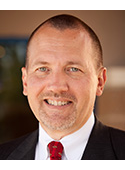 Doyle Edwards: Mr. Edwards is Director of Government Programs for Brewer Science, a global technology leader in developing and manufacturing innovative materials and processes for the fabrication of semiconductors and microelectronic devices. He is an expert on nanomaterials regulations and serves as the company lead for trade and government association relationships across the U.S., Asia, and Europe. Mr. Edwards is a longstanding participant in National Nanotechnology Initiative (NNI) conversations related to environmental health and safety, and he has hosted field teams from the National Institute for Occupational Safety and Health (NIOSH) at his company’s facility to conduct research regarding worker safety.
Doyle Edwards: Mr. Edwards is Director of Government Programs for Brewer Science, a global technology leader in developing and manufacturing innovative materials and processes for the fabrication of semiconductors and microelectronic devices. He is an expert on nanomaterials regulations and serves as the company lead for trade and government association relationships across the U.S., Asia, and Europe. Mr. Edwards is a longstanding participant in National Nanotechnology Initiative (NNI) conversations related to environmental health and safety, and he has hosted field teams from the National Institute for Occupational Safety and Health (NIOSH) at his company’s facility to conduct research regarding worker safety.
https://www.brewerscience.com/
 Reginald Rogers, Jr.: Dr. Rogers is an associate professor in the Department of Chemical and Biomedical Engineering at the University of Missouri. His research interests are focused on improved water resources using novel nanomaterials, such as carbon nanotubes. His group’s focus is on developing 2D and 3D structures specifically tailored toward removal of targeted contaminants from water systems. In addition, his group also has an interest in developing carbon nanomaterial-based structures for energy storage applications, including advanced sodium-ion systems and supercapacitors. In 2023, Dr. Rogers led the Environmental Nanotechnology Gordon Research Conference panel discussion, “Nanotechnology for a Cleaner Environment.” Notable awards include the inaugural 2023 Award for Excellence in Chemical Engineering Teaching Practice from the American Institute of Chemical Engineers, the 2021 Mentor on the Map Award from the National Organization for the Professional Advancement of Black Chemists and Chemical Engineers, and the 2018 Dr. Janice A. Lumpkin Educator of the Year Award from the National Society of Black Engineers.
Reginald Rogers, Jr.: Dr. Rogers is an associate professor in the Department of Chemical and Biomedical Engineering at the University of Missouri. His research interests are focused on improved water resources using novel nanomaterials, such as carbon nanotubes. His group’s focus is on developing 2D and 3D structures specifically tailored toward removal of targeted contaminants from water systems. In addition, his group also has an interest in developing carbon nanomaterial-based structures for energy storage applications, including advanced sodium-ion systems and supercapacitors. In 2023, Dr. Rogers led the Environmental Nanotechnology Gordon Research Conference panel discussion, “Nanotechnology for a Cleaner Environment.” Notable awards include the inaugural 2023 Award for Excellence in Chemical Engineering Teaching Practice from the American Institute of Chemical Engineers, the 2021 Mentor on the Map Award from the National Organization for the Professional Advancement of Black Chemists and Chemical Engineers, and the 2018 Dr. Janice A. Lumpkin Educator of the Year Award from the National Society of Black Engineers.
https://engineering.missouri.edu/faculty/reginald-e-rogers-jr/
 Jameson Wetmore: Dr. Wetmore is Senior Global Futures Scientist in the Julie Ann Wrigley Global Futures Laboratory, Associate Professor in the School for the Future of Innovation in Society, and Co-Director of the Center for Engagement and Training in Science and Society at Arizona State University (ASU). His work combines the fields of science and technology studies, ethics, and public policy in order to better understand the interconnected relationships between technology and society. He played an active role in ASU’s Center for Nanotechnology in Society, especially regarding research and education in ethics and societal dimensions of nanotechnology. He is actively involved in training programs for graduate student scientists and engineers and works extensively with science museums to find ways to integrate discussions about the social aspects of science and technology into their programming. Dr. Wetmore is also the associate director for societal and ethical implications of the National Science Foundation’s National Nanotechnology Coordinated Infrastructure Coordinating Office, where he works to integrate the social studies of nanotechnology into the technical development of the field.
Jameson Wetmore: Dr. Wetmore is Senior Global Futures Scientist in the Julie Ann Wrigley Global Futures Laboratory, Associate Professor in the School for the Future of Innovation in Society, and Co-Director of the Center for Engagement and Training in Science and Society at Arizona State University (ASU). His work combines the fields of science and technology studies, ethics, and public policy in order to better understand the interconnected relationships between technology and society. He played an active role in ASU’s Center for Nanotechnology in Society, especially regarding research and education in ethics and societal dimensions of nanotechnology. He is actively involved in training programs for graduate student scientists and engineers and works extensively with science museums to find ways to integrate discussions about the social aspects of science and technology into their programming. Dr. Wetmore is also the associate director for societal and ethical implications of the National Science Foundation’s National Nanotechnology Coordinated Infrastructure Coordinating Office, where he works to integrate the social studies of nanotechnology into the technical development of the field.
https://sustainability-innovation.asu.edu/person/jameson-wetmore/
 Treye Thomas [moderator]: Dr. Thomas is a Lead Toxicologist and Program Manager for the Chemicals, Nanotechnology and Emerging Materials Program Area in the U.S. Consumer Product Safety Commission’s (CPSC) Office of Hazard Identification and Reduction. His duties include establishing priorities and projects to identify and mitigate potential health risks to consumers from chemical exposure during product use. Dr. Thomas has conducted comprehensive exposure assessment studies of chemicals in consumer products, played a lead role in developing the CPSC nanotechnology research program, and is addressing the health and safety implications of emerging technologies, including additive manufacturing/3D printing and wearable technology. Dr. Thomas has co-chaired the NNI Nanotechnology Environmental and Health Implications (NEHI) working group for over 15 years and represents the CPSC on the Nanoscale Science, Engineering, and Technology (NSET) subcommittee.
Treye Thomas [moderator]: Dr. Thomas is a Lead Toxicologist and Program Manager for the Chemicals, Nanotechnology and Emerging Materials Program Area in the U.S. Consumer Product Safety Commission’s (CPSC) Office of Hazard Identification and Reduction. His duties include establishing priorities and projects to identify and mitigate potential health risks to consumers from chemical exposure during product use. Dr. Thomas has conducted comprehensive exposure assessment studies of chemicals in consumer products, played a lead role in developing the CPSC nanotechnology research program, and is addressing the health and safety implications of emerging technologies, including additive manufacturing/3D printing and wearable technology. Dr. Thomas has co-chaired the NNI Nanotechnology Environmental and Health Implications (NEHI) working group for over 15 years and represents the CPSC on the Nanoscale Science, Engineering, and Technology (NSET) subcommittee.
https://www.researchgate.net/profile/Treye-Thomas
NNI Leaders
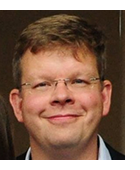 Antti Mäkinen. Dr. Mäkinen is the Materials Focus Area Lead for the Office of Naval Research and holds responsibility for the Nano-Engineered Materials program portfolio, which covers both basic and applied research areas. The US Naval Research Laboratory’s Institute for Nanoscience supports multi-disciplinary basic nanoscience in three scientific sub-areas: materials (the controlled growth and assembly of nanocomponents), interactions (understanding and controlling interactions between nanocomponents and their environment), and nanosystems (e.g, quantum, neuromorphic, and bio/inorganic systems). Dr. Mäkinen serves as the co-chair of the Nanoscale Science, Engineering, and Technology (NSET) subcommittee.
Antti Mäkinen. Dr. Mäkinen is the Materials Focus Area Lead for the Office of Naval Research and holds responsibility for the Nano-Engineered Materials program portfolio, which covers both basic and applied research areas. The US Naval Research Laboratory’s Institute for Nanoscience supports multi-disciplinary basic nanoscience in three scientific sub-areas: materials (the controlled growth and assembly of nanocomponents), interactions (understanding and controlling interactions between nanocomponents and their environment), and nanosystems (e.g, quantum, neuromorphic, and bio/inorganic systems). Dr. Mäkinen serves as the co-chair of the Nanoscale Science, Engineering, and Technology (NSET) subcommittee.
https://www.nre.navy.mil/organization/departments/code-33/materials-focus-area/nano-engineered-materials
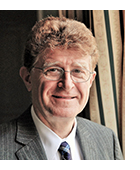 Mihail C. Roco: Dr. Roco is the Senior Advisor for Science and Engineering at the National Science Foundation (NSF). He initiated the first Federal Government program with a focus on nanoscale science and engineering (on synthesis and processing of nanoparticles) at NSF in 1991 and formed a coalition of agencies interested in nanotechnology in 1996 that led to the creation of the interagency working group on nanotechnology. Dr. Roco later became the founding chair of the U.S. National Science and Technology Council’s subcommittee on Nanoscale Science, Engineering and Technology (NSET), after which he has continuously served as an active member. Prior to joining NSF, he was a professor of mechanical engineering and is credited with thirteen inventions and has contributed over two hundred and fifty articles and twenty books. At NSF, Dr. Roco pioneered convergence science, identifying its underlying basic theories, principles, and methods, and applied it to various platforms such as convergence of nanotechnology with biology, cognition, information, artificial intelligence (intelligent cognitive assistants) and other fields.
Mihail C. Roco: Dr. Roco is the Senior Advisor for Science and Engineering at the National Science Foundation (NSF). He initiated the first Federal Government program with a focus on nanoscale science and engineering (on synthesis and processing of nanoparticles) at NSF in 1991 and formed a coalition of agencies interested in nanotechnology in 1996 that led to the creation of the interagency working group on nanotechnology. Dr. Roco later became the founding chair of the U.S. National Science and Technology Council’s subcommittee on Nanoscale Science, Engineering and Technology (NSET), after which he has continuously served as an active member. Prior to joining NSF, he was a professor of mechanical engineering and is credited with thirteen inventions and has contributed over two hundred and fifty articles and twenty books. At NSF, Dr. Roco pioneered convergence science, identifying its underlying basic theories, principles, and methods, and applied it to various platforms such as convergence of nanotechnology with biology, cognition, information, artificial intelligence (intelligent cognitive assistants) and other fields.
https://www.nsf.gov/staff/staff_bio.jsp?lan=mroco&from_org
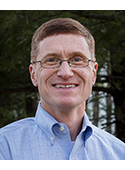 Andrew Schwartz: Dr. Schwartz serves as the Division Director for Materials Sciences and Engineering at the Department of Energy (DOE), previously managing the Energy Frontier Research Centers (EFRCs). Prior to joining DOE, Dr. Schwartz spent seven years in industry leading a multi-disciplinary scientific and engineering team in the research and development of a new technology for semiconductor metrology. Since 2009 he has represented DOE on the Nanoscale Science, Engineering, and Technology (NSET) subcommittee, serving as one of two co-chairs since 2019.
Andrew Schwartz: Dr. Schwartz serves as the Division Director for Materials Sciences and Engineering at the Department of Energy (DOE), previously managing the Energy Frontier Research Centers (EFRCs). Prior to joining DOE, Dr. Schwartz spent seven years in industry leading a multi-disciplinary scientific and engineering team in the research and development of a new technology for semiconductor metrology. Since 2009 he has represented DOE on the Nanoscale Science, Engineering, and Technology (NSET) subcommittee, serving as one of two co-chairs since 2019.
https://science.osti.gov/bes/About/Dr-Andrew-R-Schwartz
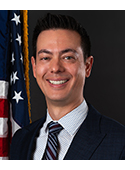 Branden Brough: Dr. Brough is the Director of the National Nanotechnology Coordination Office (NNCO) and the Assistant Director for Nanotechnology at the White House Office of Science and Technology Policy (OSTP). Before joining NNCO and OSTP, Dr. Brough served as Deputy Director of the Molecular Foundry, a DOE-funded nanoscale science research center at Lawrence Berkeley National Laboratory. There, Dr. Brough was responsible for helping guide scientific planning, while also managing the organization’s operations. Branden received his Ph.D. in Mechanical Engineering from the University of California, Los Angeles (UCLA) before becoming a AAAS Science and Technology Policy Fellow in 2007.
Branden Brough: Dr. Brough is the Director of the National Nanotechnology Coordination Office (NNCO) and the Assistant Director for Nanotechnology at the White House Office of Science and Technology Policy (OSTP). Before joining NNCO and OSTP, Dr. Brough served as Deputy Director of the Molecular Foundry, a DOE-funded nanoscale science research center at Lawrence Berkeley National Laboratory. There, Dr. Brough was responsible for helping guide scientific planning, while also managing the organization’s operations. Branden received his Ph.D. in Mechanical Engineering from the University of California, Los Angeles (UCLA) before becoming a AAAS Science and Technology Policy Fellow in 2007.
https://www.nano.gov/about-nni/nnco
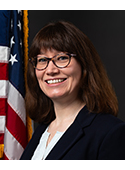 Quinn Spadola: Dr. Spadola is the Deputy Director of the National Nanotechnology Coordination Office (NNCO). She has been a member of the National Nanotechnology Initiative community since her graduate studies. Prior to returning to the NNCO, Dr. Spadola was Associate Director of Education for the National Nanotechnology Coordinated Infrastructure (NNCI) and the Director of Education and Outreach for the Southeastern Nanotechnology Infrastructure Corridor NNCI site at the Georgia Institute of Technology. Dr. Spadola began her time at the NNCO as a AAAS Science and Technology Policy Fellow in 2014. She received her Ph.D. in physics from Arizona State University and her MFA in Science and Natural History Filmmaking from Montana State University.
Quinn Spadola: Dr. Spadola is the Deputy Director of the National Nanotechnology Coordination Office (NNCO). She has been a member of the National Nanotechnology Initiative community since her graduate studies. Prior to returning to the NNCO, Dr. Spadola was Associate Director of Education for the National Nanotechnology Coordinated Infrastructure (NNCI) and the Director of Education and Outreach for the Southeastern Nanotechnology Infrastructure Corridor NNCI site at the Georgia Institute of Technology. Dr. Spadola began her time at the NNCO as a AAAS Science and Technology Policy Fellow in 2014. She received her Ph.D. in physics from Arizona State University and her MFA in Science and Natural History Filmmaking from Montana State University.
https://www.nano.gov/about-nni/nnco




